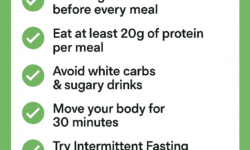In the realm of homeownership, one term that frequently emerges is “refinancing.” But what does it entail, and when is the right time to consider it? Whether you’re a seasoned homeowner or a first-time buyer, understanding the ins and outs of refinancing can potentially save you thousands of dollars and put you in a better financial position. In this comprehensive guide, we’ll delve into the basics of refinancing, explore reasons why you might want to consider it, and discuss how to navigate the process effectively.
What is Refinancing?
Refinancing a mortgage essentially means replacing your existing home loan with a new one, typically to secure a more favorable interest rate, change the loan term, or tap into your home’s equity. It involves going through the application and approval process all over again, much like when you initially obtained your mortgage. However, refinancing comes with its own set of considerations and potential benefits.
When to Consider Refinancing
1. Lower Interest Rates:
One of the primary reasons homeowners opt to refinance is to take advantage of lower interest rates. If prevailing rates are significantly lower than what you’re currently paying, refinancing can potentially lower your monthly payments and save you money over the life of the loan.
2. Change in Financial Situation:
Changes in your financial circumstances, such as an increase in income or improvement in credit score, may make you eligible for a better loan terms. Refinancing can help you secure a more favorable interest rate or even switch from an adjustable-rate mortgage (ARM) to a fixed-rate mortgage for added stability.
3. Shorten or Lengthen Loan Term:
Refinancing also provides an opportunity to adjust the term of your loan. Switching from a 30-year mortgage to a 15-year mortgage, for example, may result in higher monthly payments but can save you substantial interest over time. Conversely, extending the loan term could lower your monthly payments but increase the total interest paid.
4. Cash-Out Refinance:
If you’ve built up equity in your home, you may consider a cash-out refinance. This involves refinancing for an amount greater than what you owe on your current mortgage and receiving the difference in cash. It can be used for various purposes, such as home renovations, debt consolidation, or funding major expenses like education or medical bills.
How to Refinance Your Mortgage
1. Assess Your Goals:
Before diving into the refinancing process, clarify your objectives. Determine whether you’re primarily seeking to lower your monthly payments, reduce the total interest paid, or access cash from your home equity. Understanding your goals will help guide your decisions throughout the process.
2. Shop Around for Rates:
Just as you did when initially obtaining your mortgage, it’s crucial to compare offers from multiple lenders when refinancing. Request quotes from various financial institutions, including banks, credit unions, and online lenders, and carefully evaluate the interest rates, fees, and terms associated with each offer.
3. Gather Required Documentation:
Prepare the necessary documentation for the refinancing application, which typically includes recent pay stubs, tax returns, bank statements, and information about your current mortgage. Having these documents organized and readily available can streamline the application process.
4. Submit Your Application:
Once you’ve selected a lender and gathered all required documentation, submit your refinancing application. Be prepared to provide additional information or documentation as requested by the lender, and promptly respond to any inquiries or requests for clarification.
5. Review Loan Estimate:
Upon submitting your application, you’ll receive a Loan Estimate from the lender outlining the terms, closing costs, and estimated monthly payments associated with the refinance. Review this document carefully to ensure it aligns with your expectations and financial goals.
6. Close the Loan:
If you’re satisfied with the terms outlined in the Loan Estimate and have provided any additional requested documentation, you’ll proceed to the closing stage. During the closing, you’ll sign the necessary paperwork to finalize the refinance, and the new loan will be funded.
Conclusion
Refinancing your mortgage can be a strategic financial move that offers numerous potential benefits, from lowering your monthly payments to accessing cash for major expenses. By understanding when to consider refinancing, clarifying your objectives, and navigating the process effectively, you can make informed decisions that align with your long-term financial goals. Whether you’re looking to save money, reduce your loan term, or tap into your home’s equity, refinancing offers a pathway to greater financial flexibility and security.



